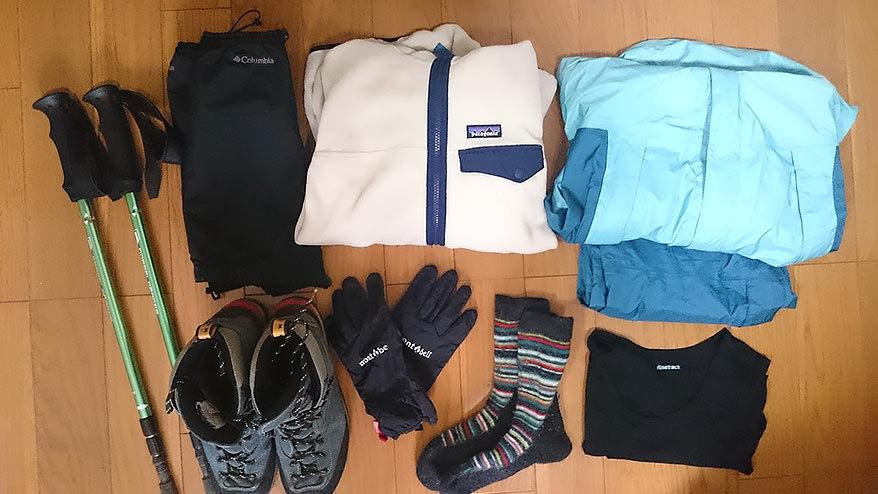Hello. This is Dojo from the Monosus Mountaineering Club. This may be sudden, but this year's company trip will be to Yakushima!
And it is no exaggeration to say that Yakushima is synonymous with rain, as there are so many rainy days on the island. It is said that it rains 35 days a month.
Therefore, if you go to Yakushima, it is best to prepare for rain.
This time, we would like to introduce some mountain gear that you should bring with you when hiking or going outdoors in places such as Yakushima where heavy rain is expected.
A must-have! Raincoat
Rain gear is said to be one of the three sacred treasures of mountaineering, and is a tool that should always be carried when mountaineering, not just on Yakushima.
When it comes to raincoats, it's best to avoid the kind of vinyl raincoats you can buy at convenience stores.
If you're going to Yakushima, you'll probably be doing some trekking or mountain climbing, but you'll sweat a lot while walking, so wearing a vinyl raincoat will make you extremely humid.
Because sweat does not evaporate, the vinyl sticks to your sweaty body, creating a maximum level of discomfort. In fact, it is no different from being wet from the rain.
If you think this is an exaggeration, try putting on a plastic raincoat on a rainy day and walking around for about 30 minutes to get a better idea of the effect.
If you go to see the Jomon Cedar, the discomfort will last for 10 hours.
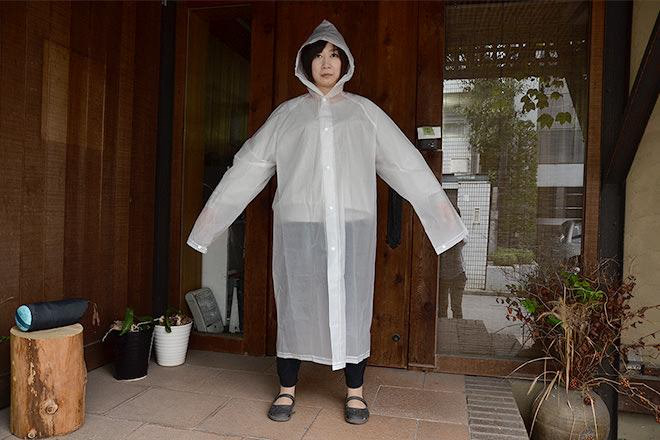
This is steaming
So, what kind of raincoat do we recommend? Without question, we can recommend something made from Gore-Tex .
Gore-Tex products are waterproof and breathable, meaning they are impermeable to water but allow water vapor to pass through.
Therefore, it allows sweat to pass out as water vapor, so you don't have to worry about it becoming stuffy and stuffy like with vinyl.
However, Gore-Tex products are expensive.
There are other raincoats that have the same waterproof and breathable properties as Gore-Tex, so if you don't want to spend a lot of money, compare the tags and choose something that is as waterproof and breathable as possible, even if it's not Gore-Tex.
My recommendation is the Mizuno Storm Saber .
Although it is inferior to Gore-Tex, it is highly waterproof and breathable, and can be purchased for around 10,000 yen.
I have used it on many rainy days and have always been able to walk safely without any issues.

Recommended Mizuno raincoats

If you are not going on a full-scale mountain climb but are just doing light trekking, a poncho is OK. However, it is not recommended for windy days.
Clothes are made of synthetic fibers!
Clothing made from natural fibers such as cotton is a no-no.
When trekking or mountain climbing, be sure to wear clothes made of synthetic fibers such as nylon or polyester.
This is because cotton retains water and is slow to dry.
If cotton absorbs the moisture when you sweat, you will remain wet even after the sweat has dried, which is uncomfortable. Not only will a drop in temperature directly lead to a drop in body temperature, which could be life-threatening.
Also, I mentioned earlier that we recommended waterproof and breathable raincoats, but if you wear cotton clothes underneath and your sweat doesn't dry, then there's no point in wearing a waterproof and breathable raincoat because your sweat won't be able to evaporate.
Be sure to choose clothes made from synthetic fibers, including underwear and socks.
My recommendation is Finetrack's Dry Layer . I learned about it from Matsushima, a member of the mountaineering club, and it's made of mesh so sweat doesn't get back onto the skin, so I was impressed with how it prevented me from getting cold from sweat.
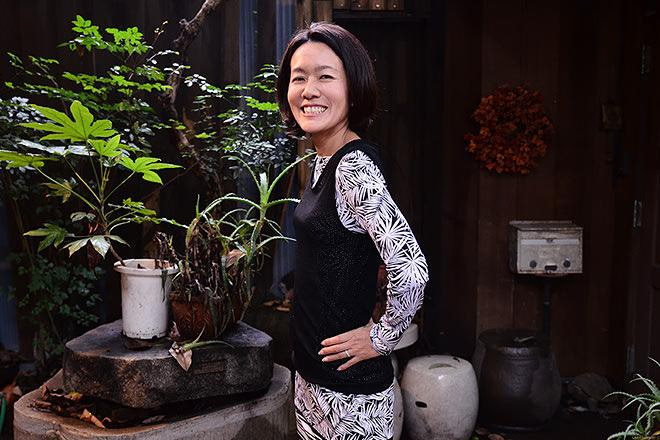
The vice president wearing Finetrack Dry Layer. This is a bad example. It should actually be worn on bare skin.
Even if it's hot at the foot of the mountain, don't let your guard down! Wear warm clothes
Even in hot weather, it gets cold up in the mountains.
The temperature drops by 0.6 degrees for every 100 meters increase in altitude, so at Jomon Cedar, which is 1,300 meters above sea level, the temperature is about 8 degrees lower than at the foot of the mountain. So even if it's 20 degrees at the foot of the mountain, it's only 12 degrees when you reach Jomon Cedar.
While walking, it's hot enough that you can walk in just a T-shirt, but as soon as you take a break, your sweat cools and you suddenly feel cold.
Be sure to bring warm clothing.
Also, in Yakushima, where it rains a lot, fleece is recommended over down. Since down feathers take a long time to dry once they get wet, it is best to avoid wearing them while moving around or taking a break.
My favorite fleece is from Patagonia . I bought it not because of its performance, but simply because I fell in love with its design.
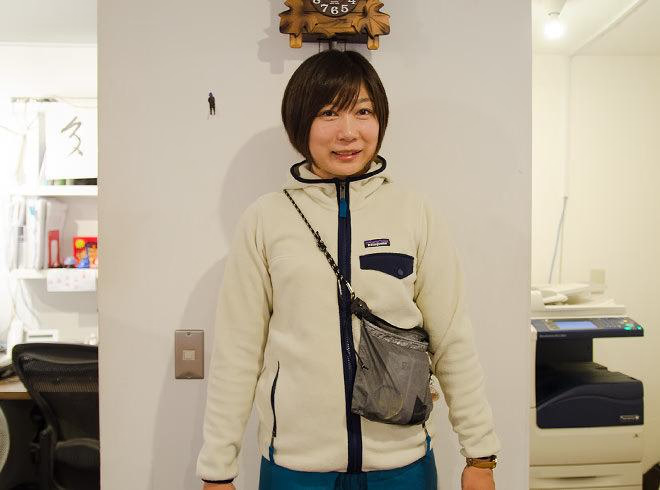
I fell in love with this Patagonia fleece at Art Sports in Shibuya, a place where you can find great goods.
Walk energetically with on-the-go snacks!
The term "sharibate" is commonly used among mountain climbers, but are you familiar with it?
Simply put, Sharibate is when you are unable to move due to lack of energy.
If you go to the Jomon Sugi course, it will take about 10 hours. Although the route is mostly gentle, there is an elevation difference of 700 meters.
If you become exhausted and have nothing to replenish your supplies, you could end up stranded, so be sure to bring snacks with you.
It is a good idea to bring a balanced diet with snacks that contain sugar or chocolate, which will give you quick energy, and carbohydrates, which take about 1-2 hours to become energy.
My recommendation is dorayaki. Dorayaki contains carbohydrates and sugar, and can be stored for 2-3 days, so it is very useful.
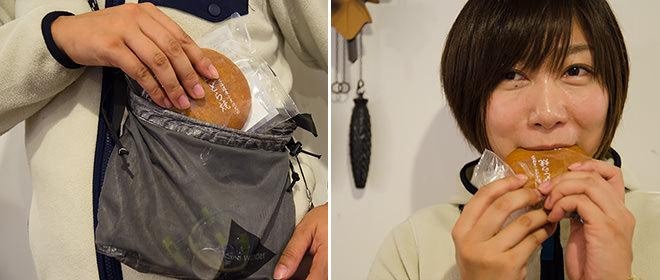
It's convenient to keep it in a sacoche so you can eat it quickly without having to take your backpack off.
We also recommend amino acid supplements to help recover from fatigue.
It's also a good idea to bring salt tablets or pickled plums to replenish the salt lost through sweating.
In fact, in the past I have become so exhausted from lack of energy caused by Sharibate that I was unable to move, but I was surprised to find that as soon as I consumed some sweet sugar I was able to move again.
Walk easily even in the rain! Hiking boots and gaiters
Finally, about the suspension.
The Jomon Cedar course on Yakushima has mostly flat, well-maintained paths, so you don't need full-fledged hiking boots, but it does rain a lot, so waterproof shoes are a good idea.
When it comes to shoes, Gore-Tex is even better.
At the very least, you should have waterproof, non-slip shoes to ensure a comfortable hike.
If you are worried about mud getting on your clothes or feet, you may want to bring gaiters, which cover your legs from the knees down.
My favorite hiking boots are the Garmont Kojitsu Sanso model. I tried on many pairs while hiking and found the one that fit my foot shape.
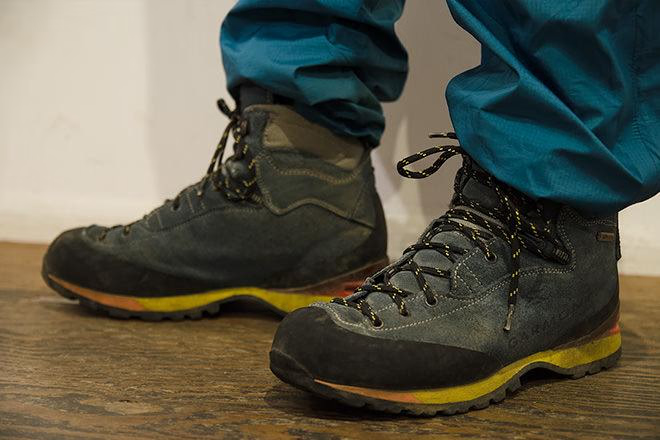
My favorite Garmont shoes. They are made of waterproof and breathable Gore-Tex and have a non-slip Vibram sole. They've become quite worn out.
The above is an introduction to the mountain gear you should bring to Yakushima.
Most of the equipment introduced here is essential for mountain climbing, not just on Yakushima, but we selected it with a particular focus on Yakushima, where there is a lot of rain.
Find your favorite gear and enjoy hiking on Yakushima even on rainy days!
